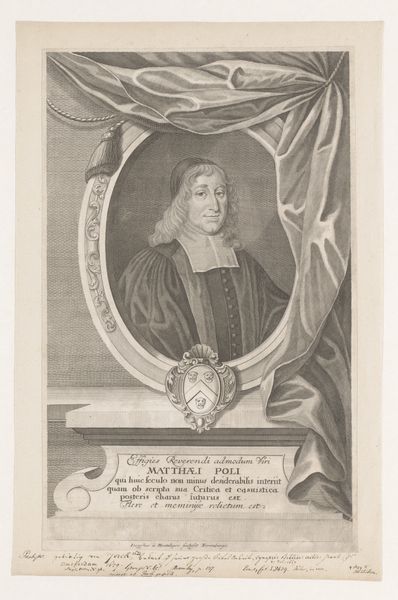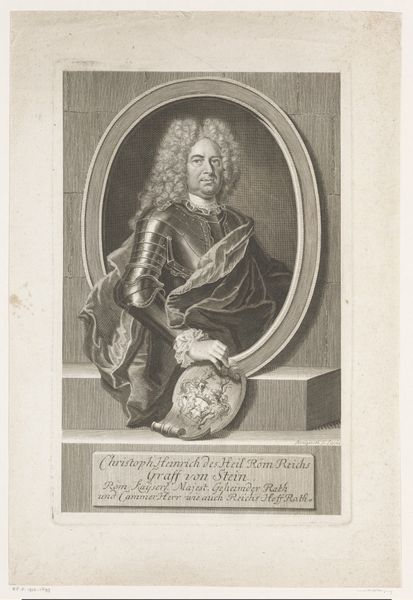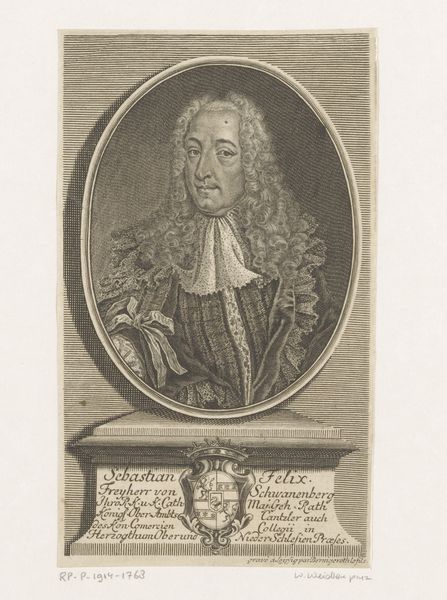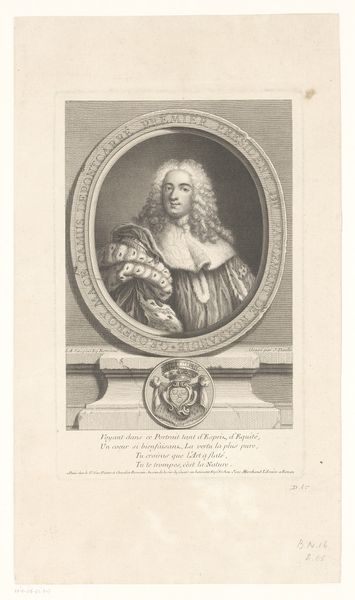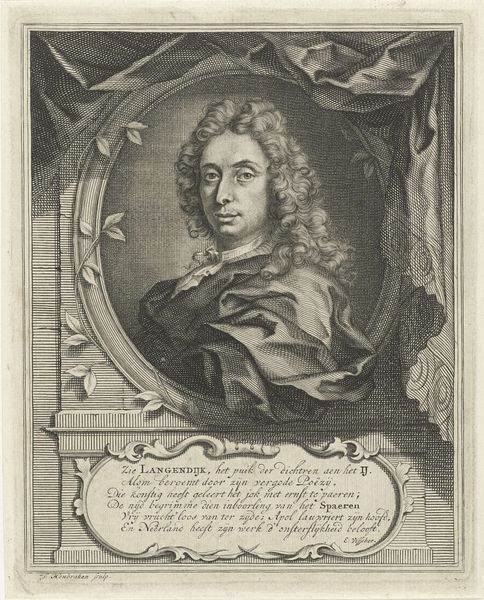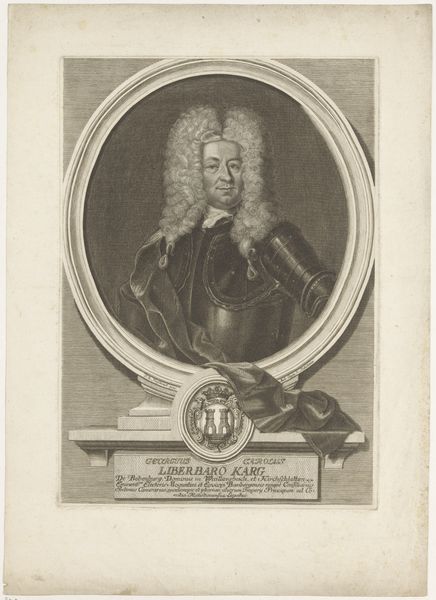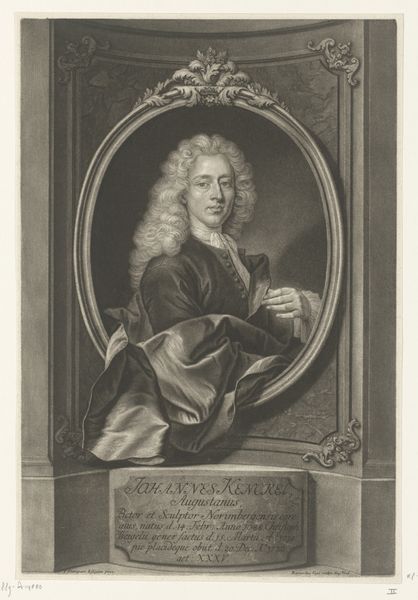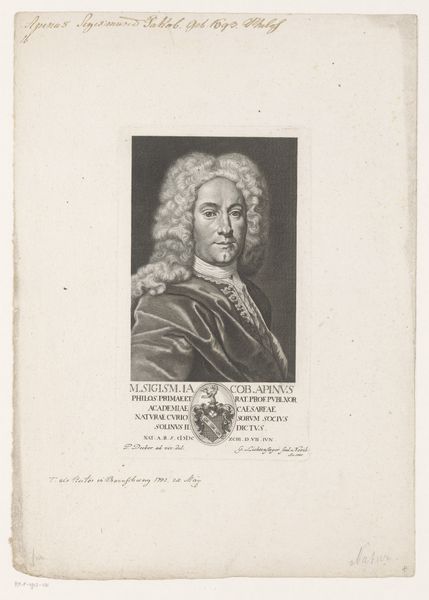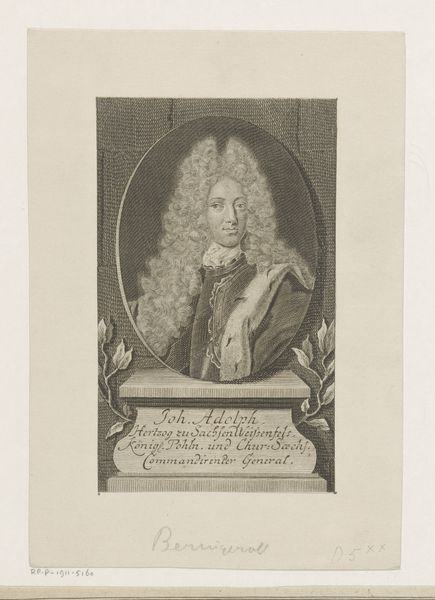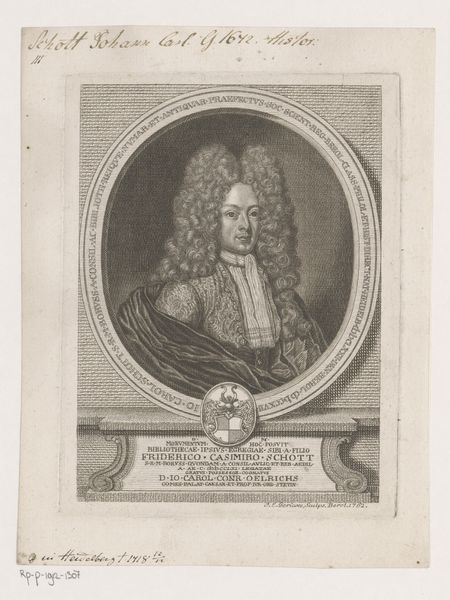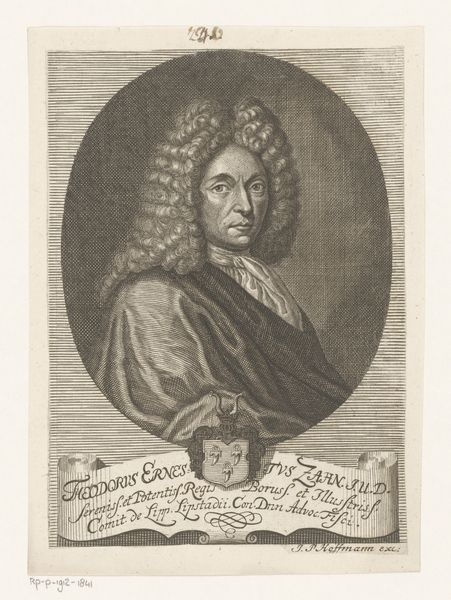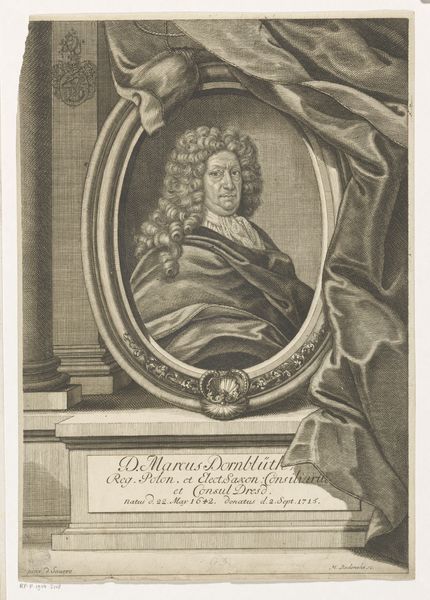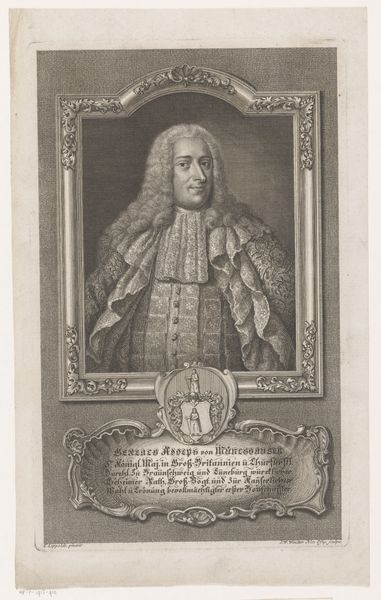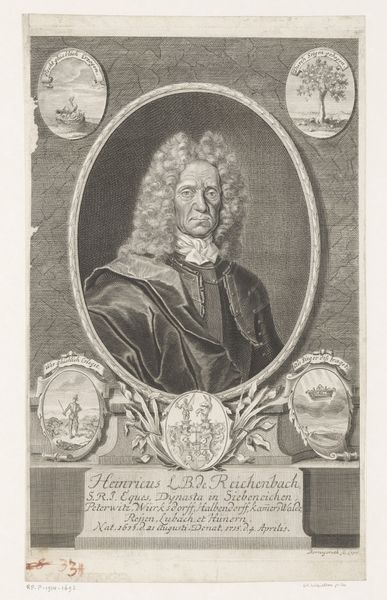
print, engraving
#
portrait
#
baroque
# print
#
old engraving style
#
geometric
#
history-painting
#
engraving
Dimensions: height 305 mm, width 186 mm
Copyright: Rijks Museum: Open Domain
Curator: Welcome. We're standing before a baroque portrait from 1733 by Martin Bernigeroth. It's an engraving titled *Portret van Georg Melchior von Ludolf*, currently held in the Rijksmuseum collection. Editor: It's imposing! The texture is compelling, almost velvety, though that stern gaze feels very distant. Curator: Observe how Bernigeroth has created form and depth. The oval frame neatly encloses the figure, offset against a shadowed backdrop—classical strategies. Note also the script and the coat of arms placed just below the central portrait. The geometric frame accentuates a powerful likeness. Editor: That oval and the coat of arms, and the rather wordy inscription... they really establish Ludolf's status within society. This is absolutely about power, specifically a certain kind of masculine, political power. And that distant gaze I mentioned—maybe that's meant to establish dominance? Curator: Precisely. Engravings like this circulated widely, reinforcing the social hierarchy of the era. Bernigeroth emphasizes Ludolf’s high status through careful composition and meticulous rendering of details. Editor: Yet, in focusing on hierarchy, do we perhaps overlook those not represented? Those outside this tight frame? What narratives are silenced or made invisible through these formal choices? The wealth and privilege depicted here came at the cost of others, it's easy to forget. Curator: Those tensions between subject and background— between power and dispossession—are not incidental. What appear as merely structural decisions carry enormous ideological weight. And your perspective opens to those social aspects beyond what initially meets the eye. Editor: Thinking about Ludolf as a figure reproduced for wider distribution gives the portrait unexpected currency. A person becomes an object or brand, whose geometric and artistic properties reflect something both deeply personal but widely ideological. Curator: Exactly. The meticulous arrangement isn't simply about representing an individual. It reflects a deliberate construction of identity, shaped by baroque sensibilities, communicated across geographic divides, and solidified for posterity. Editor: So the quiet force here, ironically, speaks to the forceful and ongoing nature of social constructions of power. That makes me see this print not just as a portrait of someone specific, but as a monument to how portraiture *itself* participates in making certain people "historical."
Comments
No comments
Be the first to comment and join the conversation on the ultimate creative platform.
